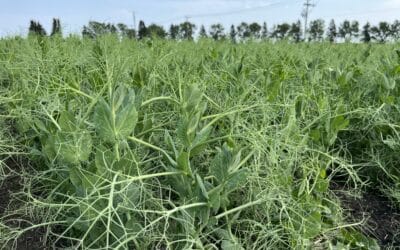Consumer misconceptions about ag chemical use are usually based on a grain of truth.
Headlines about agriculture chemical use aren’t always the most kind to the industry. And while these headlines may be flashy and attention grabbing, they’re usually overblown with consumers not being given the full truth.
“It can be a hard pill to swallow when you read some of these. They are often rooted in a kernel of truth that is then taken way out of context. And that’s what’s really frustrating,” Ian Affleck, vice-president of plant biotechnology at CropLife Canada, says on the Dec. 14 episode of Seed Speaks.
Affleck says he has found these stories will use data from the Canadian Food Inspection Agency (CFIA), the Canadian government department in charge of food safety, and will spin it to fit the story they’re trying to tell. He adds the CFIA has pesticide allowance levels that are set at 100 to 1,000 times below the level that could cause harm to humans.
“We’ll often see headlines about pesticides residues being found on food. Understandably, that can sound alarming to consumers. But what’s left out is the context about how most foods have no detectable residues and those that do are at levels far below those that would pose a risk to our health and safety. Context matters,” he adds.
Stuart Smyth, an associate professor in the Department of Agricultural and Resource Economics at the University of Saskatchewan, has found there’s lots of deliberate misinformation out there. Recently he’s seen social media posts saying strawberries are doused in glyphosate, however if that was true then the strawberries would die.
“Activist opponents to the use of chemicals or the roles of chemicals in agriculture, are taking advantage of the public’s lack of knowledge and trying to deliberately misinform them about the safety of food products,” Smyth explains in the episode.
Both Affleck and Smyth have found consumers have a real fear around chemical usage in agriculture as they struggle to see the benefits of it. While they may use chemicals in their everyday lives, they don’t have the same connection with ag chemicals which feeds into their fear of them.
“I think a lot of society has the perception that zero risk is very achievable, and it won’t raise the cost of anything. And the reality is that the lower and lower the threshold, the closer you get to zero, the significantly higher the cost of providing any product or technology is,” Smyth says.
Ag chemical usage has changed with technology advancements over the decades. While that does mean farmers today are using more products than they did 50 years ago, they’re being used in a more precise way. With crop production having moved away from being tillage intensive it has changed how chemicals are used while also providing environmental benefits.
“It allowed us to farm our land so much more efficiently, to control weeds and insects and pests. And it’s pretty devastating if you look at the data – if you didn’t have crop protection products available – the amount of land you would need to produce the same amount of food would be pretty shocking and devastating for biodiversity,” Affleck explains.
Both agree that at the end of day access to agriculture chemicals helps provide food security around the world.
Related Articles
Gene Editing Excites the Minds, and Taste Buds, of Consumers





